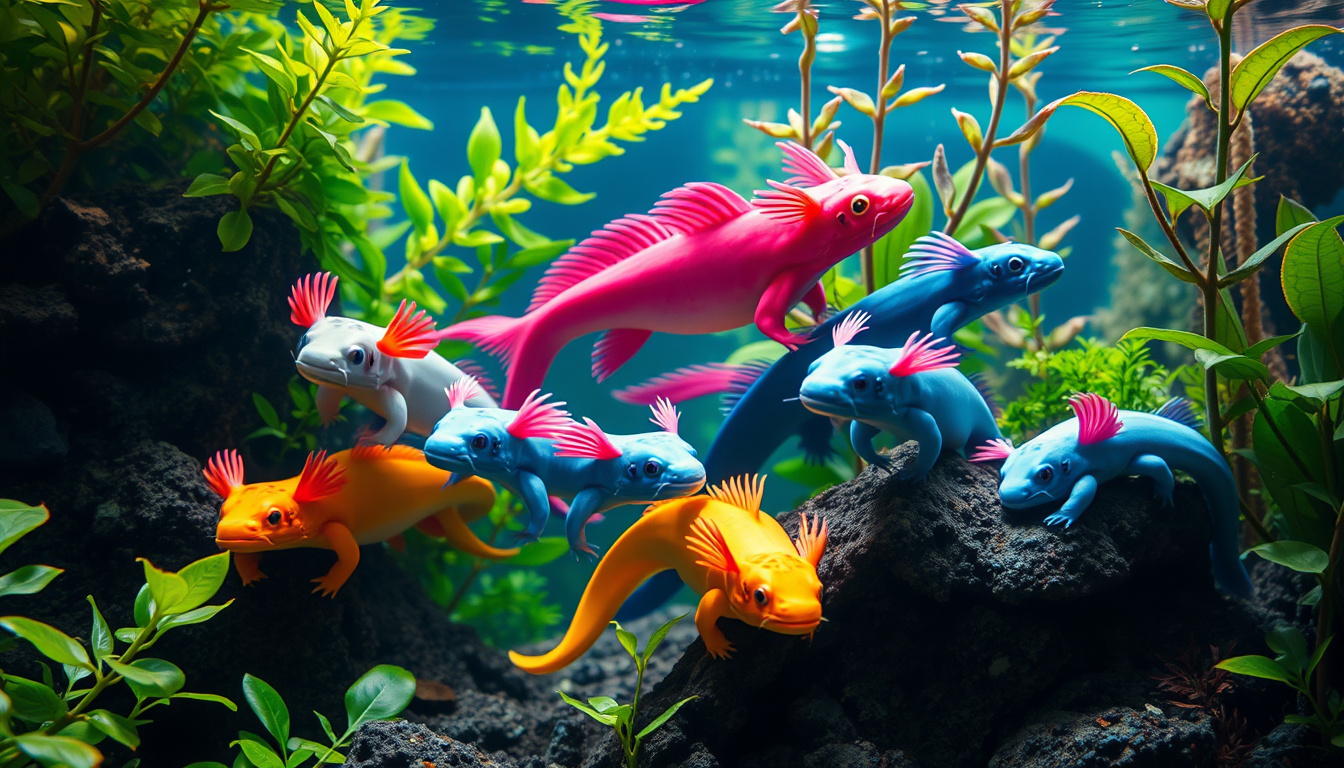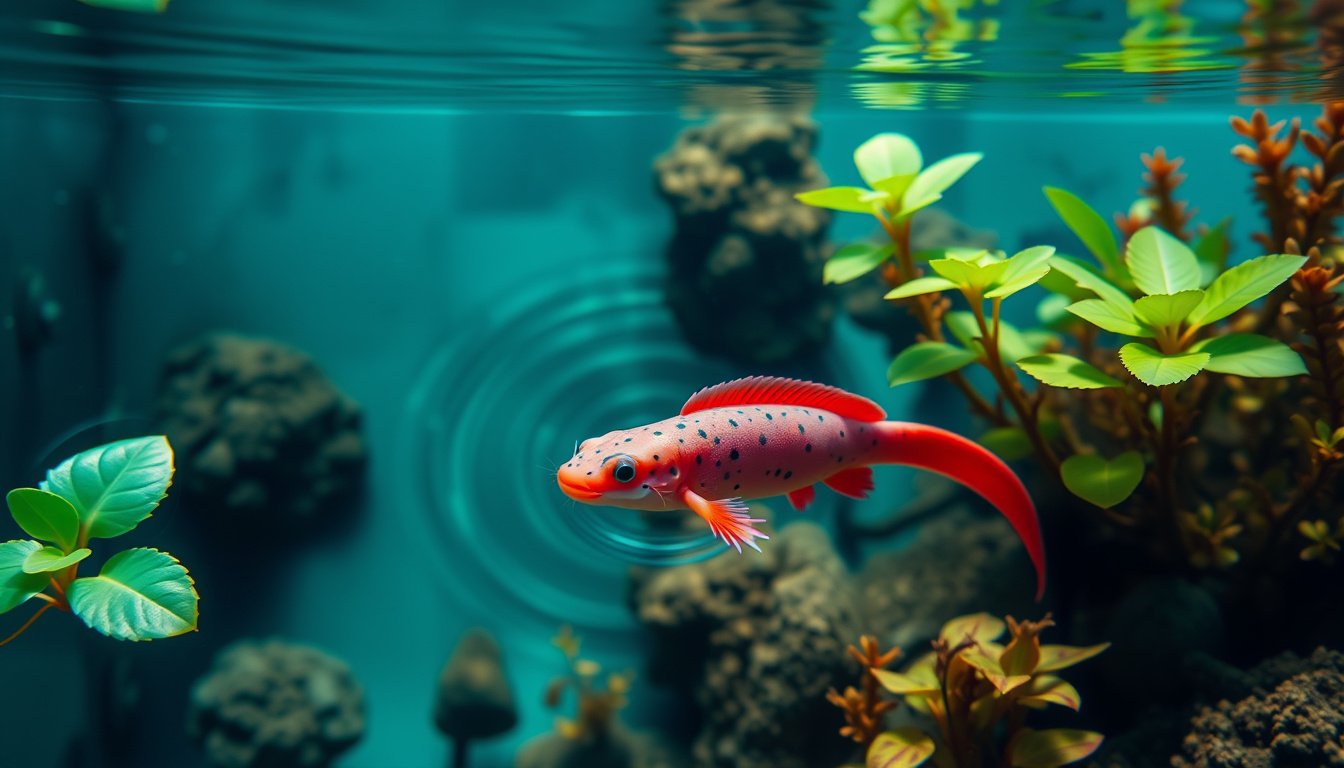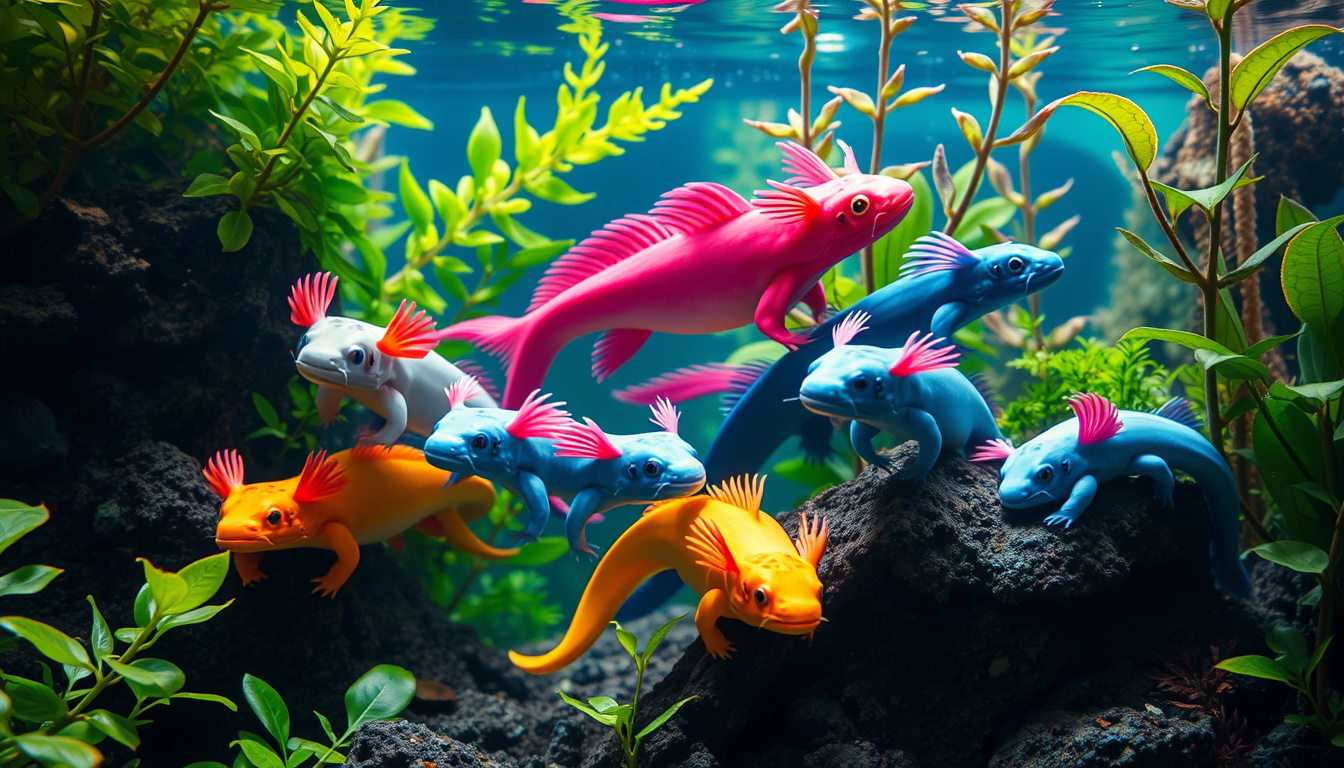Have you ever heard of an axolotl?
These fascinating creatures, often dubbed ‘Mexican walking fish,’ are actually amphibians and are known for their incredible regenerative capabilities and unique appearance.
If you’re a young enthusiast eager to dive into the captivating world of axolotls, understanding how to nurture their growth is essential.
In this article, we’ll explore the secrets behind axolotl growth, from their biology and habitat needs to their dietary requirements and common health issues.
Let’s embark on this adventure of fostering healthy axolotls and unlocking the full potential of these amazing creatures!


The Role of Water Quality in Axolotl Development
Water quality plays a crucial role in the axolotl growth process, as these fascinating amphibians thrive in clean, well-oxygenated environments.
Maintaining optimal water conditions is essential for their development, enabling them to achieve their full potential.
Factors such as pH levels, ammonia content, and temperature significantly influence not only their growth rate but also their overall health and longevity.
For instance, toxic substances like chlorine and high levels of nitrates can stunt axolotl growth and lead to severe health complications.
Therefore, regular water testing and maintenance are vital for anyone looking to raise these unique creatures at home, promoting healthy metamorphosis and enhancing their vibrant colors that make them so beloved among enthusiasts.
Common Health Issues Affecting Axolotl Growth
Axolotls are fascinating creatures that capture the interest of many young biologists and pet enthusiasts alike.
However, like all animals, they can face several health issues that may impact their growth.
One of the common health problems affecting axolotl growth is improper water conditions, which can lead to stress and stunted growth.
Axolotls thrive in clean, cool water with a pH balance around
6.5 to
8.5, and fluctuations in temperature or toxins such as ammonia can hinder their development.
Another key factor to consider is their diet; inadequate nutrition can result in poor growth rates.
Feeding axolotls high-quality pellets, earthworms, and small feeder fish is essential to provide them with the necessary nutrients for healthy growth.
Additionally, diseases like fungal infections or bacterial infections can also impede axolotl growth, making it crucial for owners to monitor their pets for any signs of illness and seek proper veterinary care when needed.
By addressing these common health issues proactively, axolotl enthusiasts can ensure their pets grow to their full potential.
Frequently Asked Questions
What are the different growth stages of an axolotl?
Axolotls typically go through several growth stages, including the embryo stage, larval stage, and adult stage.
Understanding these stages is crucial for providing appropriate care and support at each point.
What habitat conditions are necessary for promoting optimal axolotl growth?
Axolotls require a spacious tank with clean, dechlorinated water, a minimum temperature of 16°C (60°F), low water flow, and hiding spots like plants or caves to feel secure, which are essential for their growth and well-being.
What should I feed my axolotl for healthy growth?
Axolotls thrive on a varied diet that includes high-quality pellets, live food such as worms, and occasional treats like cooked shrimp or fish.
A well-balanced diet is crucial for their growth and overall health.
How does water quality affect axolotl growth?
Water quality plays a significant role in axolotl health and growth.
Regular monitoring of pH levels, ammonia, nitrite, and nitrate concentrations is vital, as poor water conditions can lead to stress and hinder proper development.
What are common health issues that can affect axolotl growth?
Common health issues that can impact axolotl growth include skin infections, gill problems, and inadequate nutrition.
Regular check-ups and maintaining optimal care conditions can help prevent these issues.
[center][/center]
[center][color=rgb(10, 10, 10)][highlight=rgb(255, 248, 231)] [/highlight][/color][color=rgb(10, 10, 10)][highlight=rgb(255, 248, 231)]As an Amazon Affiliate,[/highlight][/color][color=rgb(10, 10, 10)][highlight=rgb(255, 248, 231)] [/highlight][/color][color=rgb(10, 10, 10)][highlight=rgb(255, 248, 231)]Savvy Keto makes a commission[/highlight][/color][color=rgb(10, 10, 10)][highlight=rgb(255, 248, 231)] [/highlight][/color][color=rgb(10, 10, 10)][highlight=rgb(255, 248, 231)](at no extra cost to you)[/highlight][/color][color=rgb(10, 10, 10)][highlight=rgb(255, 248, 231)] [/highlight][/color][color=rgb(10, 10, 10)][highlight=rgb(255, 248, 231)]on purchases you make[/highlight][/color][color=rgb(10, 10, 10)][highlight=rgb(255, 248, 231)] [/highlight][/color][color=rgb(10, 10, 10)][highlight=rgb(255, 248, 231)]thru links on this site.[/highlight][/color][/center]

